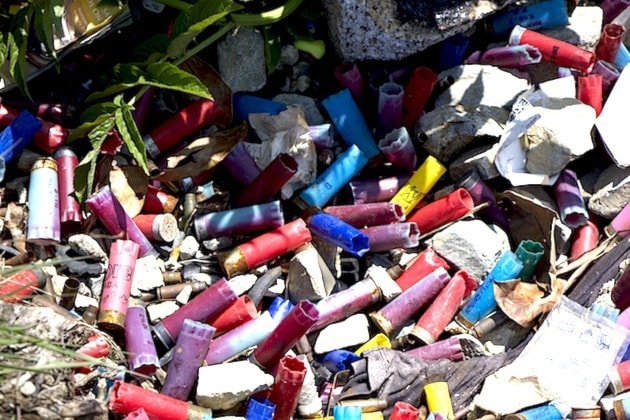Where humans go, litter follows. We are unarguably the most wasteful species on the planet.
Along benches, pull-outs, river banks, and forestry roads in the Chilliwack River Valley, shotgun shells by the million, appliances, TVs, broken bits of furniture, and abandoned garbage clutter the backcountry.
The irresponsible lowlifes who dump this stuff for target practice really couldn’t care less about the consequences, the hazards to people, and the dangers facing wildlife from all the glass and shards of plastic embedded in what could otherwise be walking or grazing areas.
If garbage is a big problem in the local backcountry it’s a huge problem in the oceans where plastics have become the DDT of the modern age.
Back in the 1960s, author Rachel Carson sounded the alarm in her book Silent Spring about the impact of pesticides on wildlife and collapsing populations of bird species due to eggshell thinning. Now, scientists see a parallel with floating plastics and micro-plastics threatening marine life at every level of the food chain.
Since the 1970s waste plastic carried by ocean currents has swirled into huge concentrations popularly known as the Great Pacific Garbage Patch. Some claim it is twice the size of Texas. But in reality there are several of these huge patches.
According to a recent study published in the journal Proceedings of the National Academy of Sciences (PNAS), plastic waste concentrations have now reach 580,000 pieces per square kilometre and it is increasing exponentially, doubling every 11 years.
The Australian and U.K.-based authors said that a review of the UN Convention on Biological Diversity documented over 600 species from micro-organisms to whales that are affected by marine plastic waste mainly from ingestion. This not only creates a potential blockage in the gut but organ damage from leaching toxins.
A study published in February this year in the journal Science estimated that between four and 12 million tons of plastic are dumped into the ocean annually. Researchers from the University of California Santa Barbara looked at 192 coastal countries and their plastics disposal in 2010.
They calculated that eight million metric tons of shopping bags, toys, bottles, food wrappers, and other plastic waste drifted into the world’s oceans that year.
Of even greater concern is the pervasive, almost invisible, contamination of micro-plastics a millimeter or smaller in size and which have been found everywhere from layers of sediment in deep ocean to the frozen Arctic. With particles this small, birds mistake them for fish eggs and digest them.
Add to that the fact that plastics contain harmful chemicals such as Bisphenol A, phthalates, and flame retardants that can impact the endocrine system and contain toxic components linked to cancer. Moving up the marine food chain, these residues could get into commercial food stocks and, ultimately, be eaten by humans.
And when you add plastics pollution to coastal development, climate change, warming waters, acidic oceans, toxic algae blooms, and overfishing, it shouldn’t surprise anyone that fish stocks have halved since 1970 with some stocks down 75 per cent according to a recent World Wildlife Fund report.
Seabirds are as vulnerable as fish. Based on historical records over the past 60 years, the researchers writing in PNAS estimate that the ingestion rate of plastics by seabirds is around 90 per cent and will increase to 99 per cent of all seabird species by 2050.
The answer to this mess is obvious. Better knowledge. Better enforcement. Better management. The European Union has already demonstrated that improved practices have reduced losses from industrial processes leading to less plastic ingestion by tubenosed seabirds called fulmars.
In our local backcountry, a similar refit is long overdue to curb that toss-away mentality.
